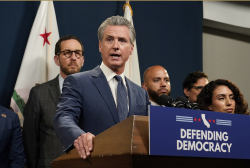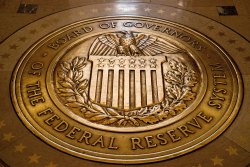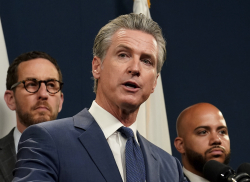
If there is one commonality in our national war over the university, it is an obsession with the feelings of undergraduates. While advocates for free speech insist that a campus climate of fear makes students too anxious to express themselves, advocates for minority students (a shifting coalition that now includes opponents of anti-Semitism) say that without more robust restrictions on speech, some students will suffer psychological distress.
All parties, though, are asking a version of the same question: Do students feel safe? From racists? From woke moralists? From anti-Semites?
As someone aligned with the free speech camp, I’m concerned that my “team” has too readily followed the lead of DEI advocates in their preoccupation with the feelings of undergraduates, a tendency that has only increased since the events of October 7. We should shift our gaze away from what students are feeling to what their professors are actually doing inside the classroom. Once we know more about the true quality of college teaching, we can construct rankings for students and parents who genuinely care about liberal education.
The partisans of psychological equipoise have engineered countless surveys to gauge the emotional state of our students. Campus climate surveys are the rage.
Some are created—usually by those with DEI sympathies—to assess the anxieties of minority students. Since 2018, for example, the HEDS (Higher Education Data Sharing Consortium) Campus Climate Survey has been administered to some 320,000 faculty, students, and staff at more than 400 colleges and universities. It is frequently used to assess the efficacy of diversity and inclusion efforts. While universities tend not to release the full results of these surveys to the general public, they generally find that most of their students feel welcome on campus, though those from minority backgrounds are often less positive in their assessments. At my home institution, Claremont McKenna, my sense is that these surveys have tempered the claims of campus advocates who say the campus climate is terrible, even as they show meaningful differences between groups.
Partly because these DEI-oriented university administrators have been reluctant to fold concerns about self-censorship into their inquiries, free speech advocates have eagerly built their own campus climate surveys. The king of them all is the Foundation for Individual Rights and Expression (FIRE) annual College Free Speech Rankings, an important effort to measure students’ comfort expressing ideas on campus. Last year FIRE surveyed more than 58,000 students at 254 universities and colleges.
The students are asked a battery of questions. Some query students’ views on free speech and how often they self-censor, but many are primarily interested in their emotions. For example, FIRE asks: “How comfortable would you feel doing the following on your campus?” Then students are given a series of five follow-up questions, such as whether they would feel comfortable “disagreeing with a professor” or “expressing your views on a controversial political topic during an in-class discussion.” Students are also asked how often they feel anxious, stressed, depressed, or lonely.
From such questions and other metrics, FIRE then gives every university and college a “free speech score.” Some institutions, like the University of Chicago, perform relatively well; others, like Harvard and Columbia, perform terribly. In 2024, these venerable places received a 0 on a scale of 100.
No doubt speech climates are too chilly in many universities and colleges, and FIRE should be commended for documenting this problem and making it too difficult to deny. But even so, FIRE’s annual rankings rest too easily on a questionable premise: that the best college is one where all students say they are never uncomfortable expressing themselves. To achieve a truly outstanding FIRE score, campuses need to become almost entirely free of social anxiety.
All parties are asking a version of the same question: Do students feel safe? From racists? From woke moralists? From anti-Semites?
But this is unreasonable. Emotional discomfort, after all, is normal and inevitable, especially in a fragmented nation. And while it is sometimes a sign that there is something wrong with the campus speech climate, it can also be a sign that professors are taking risks by teaching difficult subjects and raising ideas that cause some intellectual friction and provoke discomfort.
Perhaps that’s why universities that focus on technical subjects like engineering and science often score well on FIRE surveys. After all, fields like fluid mechanics don’t typically generate ideological debates or multiple interpretive frameworks. Two of the best universities for free speech, according to FIRE, are Michigan Technological University and the Georgia Institute of Technology, ranked second and fifth, respectively. But you shouldn’t go to either place if you’re looking for much political or philosophical discussion.
Similarly, sectarian universities and colleges often provide instruction within a relatively unified worldview and attract students already aligned with that perspective, a fact that may mute their students’ social anxiety around speech. Liberty University, a fundamentalist institution and one of the few Christian ones that still teach young Earth creationism, received a raw free speech score that was considerably higher than Harvard’s. But who thinks Liberty is better than Harvard at providing a liberal education? (This may be why FIRE didn’t rank these sectarian institutions alongside the other universities and colleges. Instead, they were quarantined in a separate listing.)
As these examples suggest, there is a serious problem with rankings that place so much emphasis on students’ feelings: They tell us almost nothing about the extent to which different viewpoints on contentious issues are taught and discussed in college classrooms. And they don’t tell us how professors are responding to anxious students.
We shouldn’t infer that many issues don’t get discussed in a serious way merely because students express discomfort at speaking up in their classrooms. Anyone who has taught contentious issues these days, as I have, knows that great discussions can take place even when some students are deeply uncomfortable. Indeed, discomfort, as I’ve emphasized, is as much a symptom of a good education as it is an impediment to one. What matters is the extent to which classroom conversations are so crippled by that discomfort that they can’t explore topics deeply and honestly. Classrooms can be educational and marked by anxiety and self-censorship at times. And they can be closed in a relaxed, comfortable climate.
That doesn’t mean that the pervasive anxiety around some topics doesn’t matter; of course it does. And it makes our work more difficult. But just as ships can traverse rough waters, so too can liberal education succeed in a sea of anxiety.
A deeper problem than the campus climate, I suspect, is the curriculum itself, particularly in humanistic fields outside of economics and political science. I fear that the courses in many such disciplines are closing, particularly around the topics that most divide us.
That’s why, in collaboration with some colleagues at the Claremont Colleges, I tapped a database with millions of college syllabi to assess the extent to which issues like racial inequality, the ethics of abortion, and the Israeli-Palestinian conflict are taught in ways that expose students to broad scholarly disagreements over those issues.
Our findings are concerning. For example, Michelle Alexander’s The New Jim Crow: Mass Incarceration in the Age of Colorblindness is often assigned to college undergraduates—as it should be, given its scholarly and political influence. However, her most prominent and serious academic critics—none of whom, I might add, consider themselves to be conservatives—are rarely assigned alongside it. These include James Forman Jr., author of Locking Up Our Own: Crime and Punishment in Black America, which won the Pulitzer Prize, and my colleague Michael Fortner’s Black Silent Majority: The Rockefeller Drug Laws and the Politics of Punishment, published by Harvard University Press and selected as an “Editors’ Choice” by The New York Times. Our results show that, since their publication, Forman’s and Fortner’s groundbreaking books have been assigned roughly 3.5 percent and 1.5 percent of the time, respectively, alongside The New Jim Crow. What is missing, it seems, is a whole spectrum of non-radical perspectives. And that, we suspect, encourages an essentially Manichaean mind-set in students, one that oversimplifies the problems they will one day inherit.
Anyone who has taught contentious issues these days, as I have, knows that great discussions can take place even when some students are deeply uncomfortable. Indeed, discomfort, as I’ve emphasized, is as much a symptom of a good education as it is an impediment to one.
I was sensitized to this problem when I taught a course on race and inequality in 2018. To my surprise, none of my students at the Claremont Colleges—many of whom had taken multiple courses on race—had been exposed to Black authors more conservative than Angela Davis and Ta-Nehisi Coates, both of whom were familiar to them. That meant that they had never heard of the greatest Black social scientists of the twentieth century, including William Julius Wilson and Orlando Patterson, among others. Wilson, for example, was president of the American Sociological Association and a National Medal of Science laureate. Patterson holds a chaired professorship in sociology at Harvard and won the Distinguished Contribution to Scholarship Award of the American Sociological Association. These are towering figures in academia. Certainly, Coates is a gifted writer and Davis is by some lights an interesting polemicist. But great social scientists, like Wilson and Patterson, will do far more to help students think in serious ways about inequality.
The same problem can be found in the teaching of the Israeli-Palestinian conflict. Among the most popular authors is Rashid Khalidi, the recently retired Edward Said Professor of Modern Arab Studies at Columbia. Writing as a Palestinian American, Khalidi is a scholar-activist who insists that Jewish claims to Israel rest on an “epic myth.” While students should read Khalidi, his work is rarely paired with voices that are sympathetic to Israel and complicate the story he tells. Instead, his writing is commonly assigned alongside authors who reinforce and amplify his criticisms of Israel, including fellow travelers James Gelvin, Illan Pappe, and Charles Smith.
Of course, there is almost certainly wide curricular variation across institutions. But absent any systematic account of which places really expose students to varied perspectives on the most pressing social and political challenges, it’s hard to know how particular colleges and universities stack up.
This is all to say that we need better college rankings, ones that don’t lean so heavily on campus climate surveys. We need rankings that care less about the feelings of individual students and far more about the extent to which classrooms discuss and consider varied scholarly perspectives on contentious issues, like race, gender, social policy, Israel, and inequality. This seems especially true if we care about how colleges—as institutions—are responding to a generation that is plagued by social anxiety and how well they are preparing their students for citizenship in a fractured nation.
In other words: We should care more about what professors are doing, and less about what students are feeling. So here are some questions FIRE should be asking students: How often do your professors in the social sciences and humanities assign authors who represent a diverse range of perspectives on contentious political topics like race, gender, inequality, and the like? Do your professors include a range of perspectives on their syllabi? How often do your professors play devil’s advocate when their students refuse to do so? Such questions can be assessed, at least indirectly, by asking students to share their classroom experiences rather than their own emotions.
While the psychological comfort of our students certainly matters, it’s not the most important indicator of a good liberal education—and, indeed, sometimes psychological discomfort, even, at times, to the point of self-censorship, is its price.
The post Campus Climate Rankings Miss the Point appeared first on Washington Monthly.


 3 days ago
1
3 days ago
1 










 Bengali (Bangladesh) ·
Bengali (Bangladesh) ·  English (United States) ·
English (United States) ·